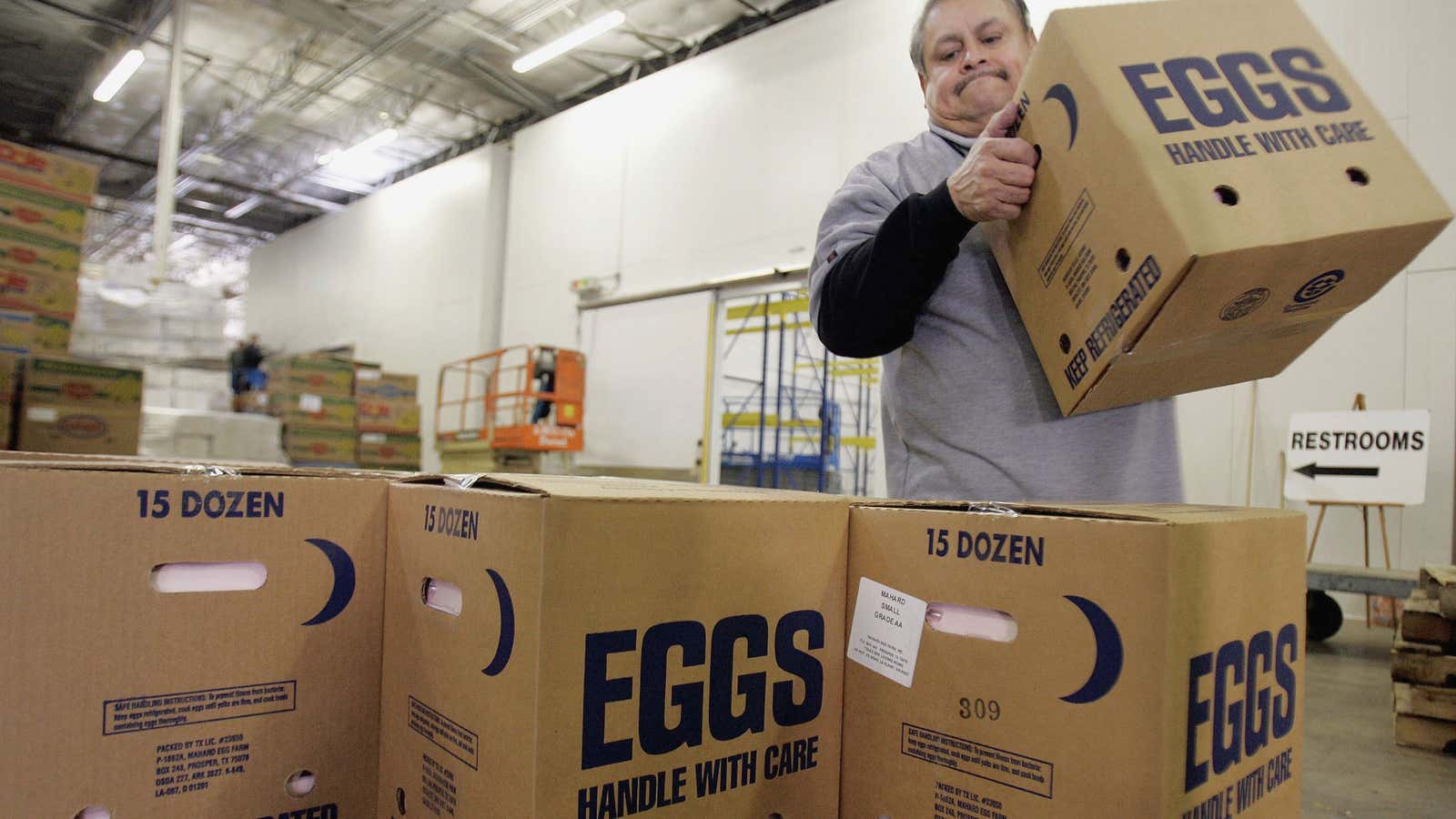When the supply of a good decreases, its price increases, which then makes demand for that good decrease. This is a foundational principle of economics. But it’s rare to see a real-world demonstration of this principle, when so many other market forces are at play. Which is exactly why the dynamics of the international egg trade in recent months have been so fascinating.
Recently, the price of eggs in the US has increased dramatically, due to an outbreak of avian flu. More than 40 million chickens have been killed, in hopes of containing the infection. With fewer birds in the US laying eggs, supply is constrained.
US exports of eggs have suffered, according to the US Census Bureau. There are simply less eggs to go around.
The US exported 227 million fewer eggs in the twelve months ending in August than the twelve months ending in April—a decline of 9.4%.
The smaller supply has led to an increase in export prices.
The export price of a dozen US eggs has risen 7.2%.
In turn, the value of those exports has remained nearly constant.
They only dropped 2.88% over the same time period.
It all adds up to practically the first lesson taught in every freshman economics class in the world; but this time, it’s happening in real life, on the egg farm.
